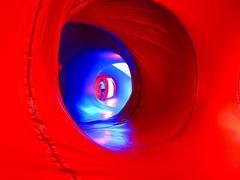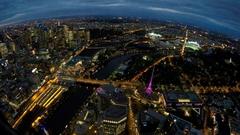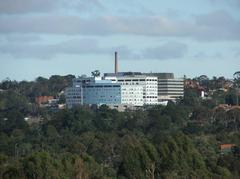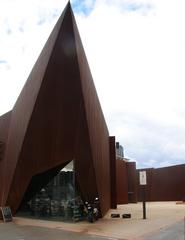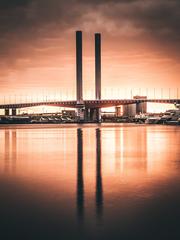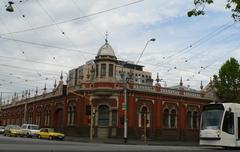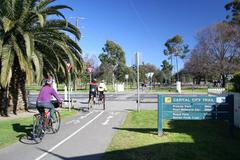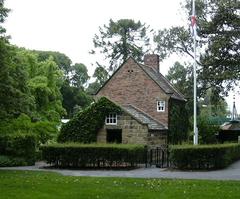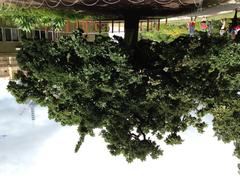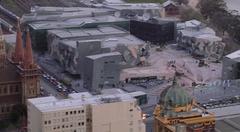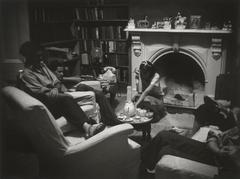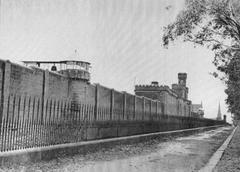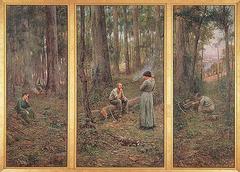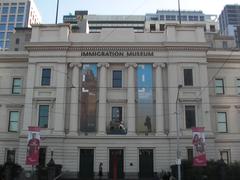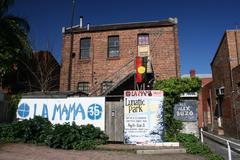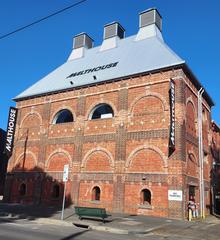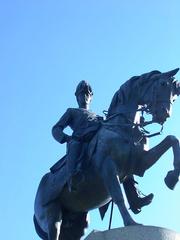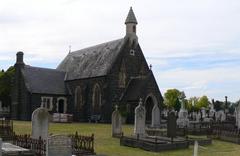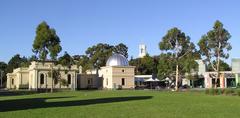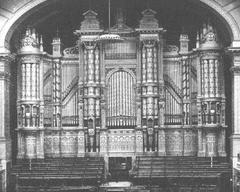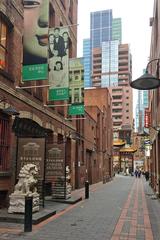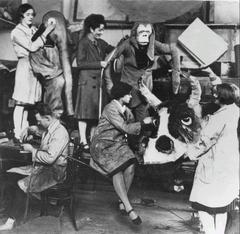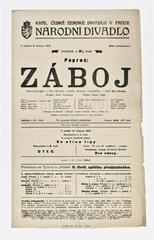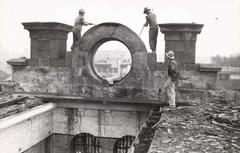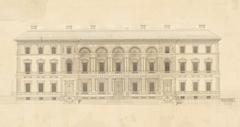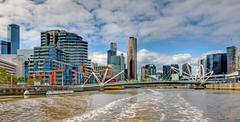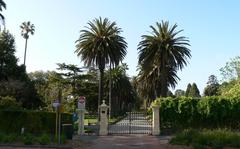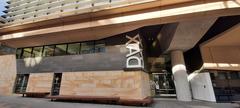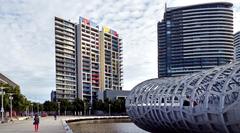Guide to Visiting St Kilda Pier Melbourne
Date: 18/07/2024
Introduction
St Kilda Pier, a historic landmark located in Melbourne, Australia, is an iconic destination that seamlessly blends natural beauty, recreational activities, and rich cultural heritage. Constructed in 1853, the pier has been a vital part of Melbourne’s coastal landscape, serving as a docking point for steamships and ferries and facilitating the transportation of goods and passengers (Port Phillip Ferries). Over the years, St Kilda Pier has evolved from a simple wooden jetty to a bustling hub of social and recreational activity, attracting both locals and tourists. Its Edwardian Pavilion, built in 1904, remains a beloved landmark that offers stunning panoramic views of Port Phillip Bay and the Melbourne skyline (National Trust). The pier’s breakwater, home to a colony of Little Penguins, adds an element of ecological significance, making it a popular spot for wildlife enthusiasts (Earthcare St Kilda). With its rich history, cultural importance, and diverse range of activities, St Kilda Pier is an essential destination for anyone visiting Melbourne.
Table of Contents
- [Discover the History and Visitor Information of St Kilda Pier, Melbourne](#discover-the-history-and-visitor-information-of-st-kilda-pier-melbournediscover-the-history-and-visitor-information-of-st-kilda-pier-melbourne)
- [Early Development and Construction of St Kilda Pier](#early-development-and-construction-of-st-kilda-pierearly-development-and-construction-of-st-kilda-pier)
- [Expansion and Upgrades](#expansion-and-upgradesexpansion-and-upgrades)
- [The Early 20th Century - A Hub of Activity](#the-early-20th-century---a-hub-of-activitythe-early-20th-century---a-hub-of-activity)
- [World War II and Post-War Era](#world-war-ii-and-post-war-eraworld-war-ii-and-post-war-era)
- [The 1980s - Restoration and Preservation](#the-1980s---restoration-and-preservationthe-1980s---restoration-and-preservation)
- [The 21st Century - Modern Enhancements](#the-21st-century---modern-enhancementsthe-21st-century---modern-enhancements)
- [Visitor Information](#visitor-informationvisitor-information)
- [Cultural and Social Significance](#cultural-and-social-significancecultural-and-social-significance)
- [Preservation Efforts and Future Plans](#preservation-efforts-and-future-planspreservation-efforts-and-future-plans)
- [Frequently Asked Questions](#frequently-asked-questionsfrequently-asked-questions)
- [Explore the Historical and Cultural Significance of St Kilda Pier - Tickets, Visiting Hours & More](#explore-the-historical-and-cultural-significance-of-st-kilda-pier---tickets-visiting-hours—moreexplore-the-historical-and-cultural-significance-of-st-kilda-pier---tickets-visiting-hours—more)
- [Introduction](#introductionintroduction)
- [Historical Significance](#historical-significancehistorical-significance)
- [Cultural and Social Importance](#cultural-and-social-importancecultural-and-social-importance)
- [Environmental and Ecological Significance](#environmental-and-ecological-significanceenvironmental-and-ecological-significance)
- [Architectural and Engineering Marvel](#architectural-and-engineering-marvelarchitectural-and-engineering-marvel)
- [Recreational and Tourism Value](#recreational-and-tourism-valuerecreational-and-tourism-value)
- [Economic Impact](#economic-impacteconomic-impact)
- [Conservation and Sustainability Efforts](#conservation-and-sustainability-effortsconservation-and-sustainability-efforts)
- [Accessibility and Visitor Information](#accessibility-and-visitor-informationaccessibility-and-visitor-information)
- [Practical Visitor Information](#practical-visitor-informationpractical-visitor-information)
- [Special Events and Guided Tours](#special-events-and-guided-toursspecial-events-and-guided-tours)
- [FAQ](#faqfaq)
- [Discover St Kilda Pier - Visiting Hours, Tickets, and Top Attractions in Melbourne](#discover-st-kilda-pier---visiting-hours-tickets-and-top-attractions-in-melbournediscover-st-kilda-pier---visiting-hours-tickets-and-top-attractions-in-melbourne)
- [Introduction](#introductionintroduction-1)
- [St Kilda Pier and Breakwater](#st-kilda-pier-and-breakwaterst-kilda-pier-and-breakwater)
- [Fishing and Boating](#fishing-and-boatingfishing-and-boating)
- [St Kilda Sea Baths](#st-kilda-sea-bathsst-kilda-sea-baths)
- [St Kilda Beach](#st-kilda-beachst-kilda-beach)
- [Luna Park](#luna-parkluna-park)
- [Acland Street](#acland-streetacland-street)
- [St Kilda Botanical Gardens](#st-kilda-botanical-gardensst-kilda-botanical-gardens)
- [St Kilda Esplanade Market](#st-kilda-esplanade-marketst-kilda-esplanade-market)
- [Palais Theatre](#palais-theatrepalais-theatre)
- [Visitor Tips](#visitor-tipsvisitor-tips)
- [FAQ](#faqfaq-1)
- [Conclusion](#conclusionconclusion)
Discover the History and Visitor Information of St Kilda Pier, Melbourne
Early Development and Construction of St Kilda Pier
St Kilda Pier, located in Melbourne, Australia, has a rich history dating back to the mid-19th century. The original pier was constructed in 1853, primarily to serve the needs of the burgeoning local community and to facilitate the transport of goods and passengers. The initial structure was a simple wooden jetty, reflecting the modest engineering capabilities and economic conditions of the time (Port Phillip City Collection).
Expansion and Upgrades
As Melbourne grew, so did the demands on St Kilda Pier. In the 1880s, the pier underwent significant expansion to accommodate larger vessels and increased traffic. This period saw the construction of a more robust structure, incorporating iron and timber to enhance durability. The pier was extended to a length of approximately 194 meters, making it a prominent feature of the St Kilda foreshore (Heritage Council Victoria).
The Early 20th Century - A Hub of Activity
The early 20th century marked a golden era for St Kilda Pier. It became a bustling hub of social and recreational activity, attracting both locals and tourists. The pier was a popular destination for promenading, fishing, and boating. In 1904, the St Kilda Pavilion, an iconic Edwardian structure, was built at the end of the pier. This pavilion served as a tea room and later as a kiosk, becoming a beloved landmark (National Trust).
World War II and Post-War Era
During World War II, St Kilda Pier played a strategic role. It was used by the military for various purposes, including the mooring of naval vessels. The post-war era saw a decline in the pier’s commercial use, but it remained a popular recreational spot. In the 1950s and 1960s, the pier underwent several maintenance and repair works to address wear and tear caused by the harsh marine environment (Australian War Memorial).
The 1980s - Restoration and Preservation
By the 1980s, St Kilda Pier had fallen into a state of disrepair. Recognizing its historical and cultural significance, the local government initiated a major restoration project. This effort aimed to preserve the pier’s structural integrity while maintaining its historical character. The restoration included reinforcing the timber piles, replacing damaged decking, and refurbishing the St Kilda Pavilion (City of Port Phillip).
The 21st Century - Modern Enhancements
In the 21st century, St Kilda Pier continues to be a vital part of Melbourne’s coastal landscape. Recent enhancements have focused on improving accessibility and visitor experience. In 2010, a new breakwater was constructed to protect the pier from storm damage and to provide a habitat for the local penguin colony. This breakwater has become a popular spot for wildlife enthusiasts and photographers (Parks Victoria).
Visitor Information
Visiting Hours - St Kilda Pier is open 24 hours a day, seven days a week. However, the St Kilda Pavilion has specific opening hours, typically from 9 AM to 5 PM.
Tickets - There is no entry fee to access St Kilda Pier or the breakwater. However, some events or guided tours may require a ticket.
Accessibility - The pier is accessible to visitors with mobility impairments. Ramps and smooth pathways ensure that everyone can enjoy the scenic views and amenities.
Nearby Attractions - Visitors can explore the nearby St Kilda Beach, Luna Park, and the vibrant Acland Street, known for its cafes and shops.
Special Events - Throughout the year, St Kilda Pier hosts various events such as fishing competitions, penguin watching tours, and community festivals.
Cultural and Social Significance
St Kilda Pier holds a special place in the hearts of Melburnians. It is not just a physical structure but a cultural icon that has witnessed countless social events, from leisurely strolls to community gatherings. The pier and its pavilion have been featured in numerous films, television shows, and artworks, cementing their status as symbols of Melbourne’s coastal heritage (Film Victoria).
Preservation Efforts and Future Plans
Ongoing preservation efforts are crucial to maintaining St Kilda Pier’s historical and cultural value. The local government, in collaboration with heritage organizations, continues to monitor and maintain the pier. Future plans include further structural reinforcements, enhanced visitor facilities, and educational programs to raise awareness about the pier’s history and significance (Heritage Victoria).
Frequently Asked Questions
Q: What are the best times to visit St Kilda Pier?
A: Early morning and late afternoon are ideal for a peaceful visit and to catch stunning sunrise or sunset views.
Q: Are there guided tours available?
A: Yes, guided tours are available and can be booked through local tourism operators or the St Kilda Visitor Centre.
Q: Can I fish at St Kilda Pier?
A: Fishing is allowed on the pier. Ensure you have a valid fishing license and follow local regulations.
Q: Is there parking available near St Kilda Pier?
A: Yes, there are several parking lots nearby, but they can fill up quickly, especially on weekends and holidays.
Explore the Historical and Cultural Significance of St Kilda Pier - Tickets, Visiting Hours & More
Introduction
St Kilda Pier, located in Melbourne, Australia, is a landmark rich in history and cultural significance. This article delves into the various facets of St Kilda Pier, from its historical roots to its modern-day importance, while providing practical information for visitors such as tickets, visiting hours, and travel tips.
Historical Significance
St Kilda Pier, established in 1853, served as a critical docking point for steamships and ferries, aiding transportation and trade (Port Phillip Ferries). Over time, the pier has undergone numerous renovations, the most notable in 2009, to enhance its structural integrity and aesthetic appeal (Parks Victoria).
Cultural and Social Importance
St Kilda Pier is a cultural icon and social hub. It hosts community events, recreational activities, and is a focal point for the St Kilda Festival, one of Australia’s largest free music festivals (St Kilda Festival). This annual event highlights the pier’s role in Melbourne’s cultural landscape.
Environmental and Ecological Significance
The pier is home to a colony of Little Penguins, one of the few urban penguin colonies globally (Earthcare St Kilda). The pier’s breakwater provides a safe habitat, attracting wildlife enthusiasts and researchers. Additionally, the waters around the pier, part of Port Phillip Bay, are rich in marine biodiversity, making it a popular spot for fishing and marine observation.
Architectural and Engineering Marvel
St Kilda Pier blends historical and modern design elements. The pier’s pavilion, built in 1904, maintains its Edwardian charm while incorporating modern amenities (Heritage Council Victoria). It serves as a café and viewing platform, offering panoramic views of Port Phillip Bay and the Melbourne skyline.
Recreational and Tourism Value
The pier is a major recreational hotspot. Activities include fishing, kayaking, and paddleboarding. For a more relaxed experience, visitors can enjoy stunning sunset views, making it a favorite spot for photographers and romantics (Visit Melbourne).
Economic Impact
St Kilda Pier significantly contributes to the local economy by attracting tourists who spend on dining, accommodation, and other services. It also spurs the development of nearby businesses, creating jobs and boosting the local economy (City of Port Phillip).
Conservation and Sustainability Efforts
Ongoing efforts to preserve St Kilda Pier focus on sustainability and environmental conservation. Regular maintenance and upgrades ensure its longevity and safety. Environmental initiatives, such as habitat protection for the Little Penguins, are integral to the pier’s operations, supported by various organizations and community groups (Parks Victoria).
Accessibility and Visitor Information
St Kilda Pier is accessible by public transport with several tram and bus routes, and nearby parking facilities are available for drivers. The pier is wheelchair accessible. Information boards and guided tours provide educational insights into the pier’s history, wildlife, and significance (Public Transport Victoria).
Practical Visitor Information
- Visiting Hours - The pier is open 24 hours a day, but the pavilion and certain facilities have specific opening hours.
- Tickets - Access to the pier is free, but certain events or guided tours may require tickets.
- Travel Tips - Wear comfortable shoes, bring a camera for stunning views, and check weather conditions before visiting.
- Nearby Attractions - Luna Park, St Kilda Beach, and the St Kilda Botanical Gardens are all within walking distance.
Special Events and Guided Tours
St Kilda Pier hosts special events and offers guided tours that provide deeper insights into its history and ecological significance. Check local listings for upcoming events and tour schedules.
FAQ
- What are the visiting hours for St Kilda Pier? The pier is open 24 hours a day, but pavilion hours may vary.
- How to get tickets for St Kilda Pier? Access to the pier is free; tickets may be required for certain events or guided tours.
- Is St Kilda Pier wheelchair accessible? Yes, the pier is wheelchair accessible.
Discover St Kilda Pier - Visiting Hours, Tickets, and Top Attractions in Melbourne
Introduction
St Kilda Pier, a historic and picturesque landmark in Melbourne, Australia, offers a captivating blend of natural beauty, recreational activities, and vibrant local culture. In this guide, we’ll delve into the top attractions, visiting hours, ticket information, and travel tips to help you make the most of your visit to St Kilda Pier.
St Kilda Pier and Breakwater
St Kilda Pier, originally constructed in the 1850s, has undergone several renovations, the most recent being in 2009. The pier extends into Port Phillip Bay, providing stunning views of the Melbourne skyline and the bay itself. The breakwater, added in the 1950s, is home to a colony of around 1,400 Little Penguins, making it a popular spot for wildlife enthusiasts. Visitors can observe these penguins returning to their nests at dusk, a truly magical experience (Parks Victoria).
Visiting Hours - The pier is open 24/7, but penguin viewing is best at dusk.
Tickets - No tickets are required for the pier, but guided tours may have fees.
Fishing and Boating
St Kilda Pier is a favorite spot for fishing enthusiasts. The pier’s length and structure make it an ideal location for catching a variety of fish, including snapper, flathead, and bream. The nearby St Kilda Marina offers boat hire services, allowing visitors to explore Port Phillip Bay at their leisure. For those interested in sailing, the Royal Melbourne Yacht Squadron, located adjacent to the pier, provides sailing courses and hosts numerous regattas throughout the year (Royal Melbourne Yacht Squadron).
St Kilda Sea Baths
Located at the base of the pier, the St Kilda Sea Baths offer a unique wellness experience. The historic baths, dating back to the 19th century, have been modernized to include a heated seawater pool, hydrotherapy spa, and a range of wellness treatments. The Sea Baths also house several dining options, including the iconic Republica and Captain Baxter, both offering stunning views of the bay (St Kilda Sea Baths).
St Kilda Beach
Adjacent to the pier, St Kilda Beach is one of Melbourne’s most popular beaches. The beach is perfect for swimming, sunbathing, and beach sports. The St Kilda Beach Volleyball Courts are a popular spot for both casual and competitive games. The beach is also a hub for water sports, with facilities for kite surfing, windsurfing, and paddleboarding readily available (Visit Melbourne).
Luna Park
A short walk from the pier, Luna Park is an iconic amusement park that has been entertaining visitors since 1912. The park features a range of rides and attractions, including the historic Scenic Railway, the oldest continuously operating roller coaster in the world. Luna Park is a must-visit for families and thrill-seekers alike (Luna Park Melbourne).
Acland Street
Acland Street, located a few blocks from the pier, is renowned for its vibrant atmosphere and eclectic mix of shops, cafes, and restaurants. The street is famous for its European-style cake shops, offering a delectable array of pastries and desserts. Acland Street is also home to several live music venues and bars, making it a popular spot for nightlife (Acland Street Village).
St Kilda Botanical Gardens
A short distance from the pier, the St Kilda Botanical Gardens offer a tranquil escape from the bustling beach area. Established in 1859, the gardens feature a diverse collection of plants, a conservatory, and a picturesque ornamental lake. The gardens are a perfect spot for a leisurely stroll or a picnic (City of Port Phillip).
St Kilda Esplanade Market
Held every Sunday, the St Kilda Esplanade Market is a vibrant open-air market featuring over 140 stalls. The market offers a wide range of handmade arts and crafts, including jewelry, clothing, and homewares. It’s an excellent place to find unique souvenirs and gifts while enjoying the lively atmosphere and stunning views of the bay (St Kilda Esplanade Market).
Palais Theatre
The historic Palais Theatre, located near the pier, is one of Melbourne’s premier live music and performance venues. The theatre, which opened in 1927, hostsa diverse range of events, including concerts, comedy shows, and theatrical performances. The Palais Theatre’s grand architecture and rich history make it a cultural landmark in St Kilda (Palais Theatre).
Visitor Tips
- Best Time to Visit - The best time to visit St Kilda Pier is during the warmer months, from November to March, when the weather is ideal for outdoor activities.
- Penguin Viewing - For the best chance to see the Little Penguins, visit the breakwater at dusk. It’s advisable to bring a flashlight with a red filter to avoid disturbing the penguins.
- Parking - Parking can be challenging, especially on weekends. Consider using public transport, with several tram and bus routes servicing the area.
- Safety - While the pier and surrounding areas are generally safe, it’s always wise to be cautious of your belongings and avoid swimming in rough conditions.
Frequently Asked Questions (FAQ)
Q: What are the St Kilda Pier visiting hours?
A: The pier is open 24/7, but penguin viewing is best at dusk.
Q: Do I need tickets to visit St Kilda Pier?
A: No tickets are required for the pier itself, but guided tours may have fees.
Q: How can I get to St Kilda Pier?
A: St Kilda Pier is easily accessible by public transport, with several tram and bus routes servicing the area. Parking is also available but can be challenging on weekends.
St Kilda Pier and its surrounding attractions offer a diverse range of activities and experiences, making it a must-visit destination for both locals and tourists. Whether you’re interested in wildlife, water sports, or simply relaxing by the beach, St Kilda Pier has something for everyone. Plan your visit today and discover the charm of this iconic Melbourne landmark.
Call to Action
Ready to explore St Kilda Pier? Download our mobile app Audiala for more travel tips and updates, and don’t forget to check out our related posts. Follow us on social media for the latest news and offers!
Conclusion
St Kilda Pier stands as a testament to Melbourne’s rich maritime history and cultural vibrancy. From its humble beginnings in the mid-19th century to its current status as a beloved recreational and social hub, the pier has continually adapted to meet the changing needs of the community while preserving its historical essence. The pier’s restoration efforts in the 1980s and modern enhancements in the 21st century have ensured its longevity and continued appeal (City of Port Phillip). The pier’s breakwater, which protects a colony of Little Penguins, highlights its ecological significance, attracting wildlife enthusiasts from around the world (Parks Victoria). As Melbourne continues to grow, St Kilda Pier remains a cherished part of the city’s landscape, offering a unique blend of historical charm and contemporary attractions. Whether you’re interested in fishing, boating, wildlife observation, or simply enjoying a leisurely stroll with stunning views, St Kilda Pier offers something for everyone. Ongoing conservation efforts and future plans to enhance visitor facilities will ensure that this iconic landmark remains a vital part of Melbourne’s cultural and historical heritage for years to come.
References
- Port Phillip City Collection
- Heritage Council Victoria
- National Trust
- Australian War Memorial
- City of Port Phillip
- Parks Victoria
- Film Victoria
- Port Phillip Ferries
- St Kilda Festival
- Earthcare St Kilda
- Visit Melbourne
- Royal Melbourne Yacht Squadron
- St Kilda Sea Baths
- Luna Park Melbourne
- Acland Street Village
- St Kilda Esplanade Market
- Palais Theatre
- Public Transport Victoria
